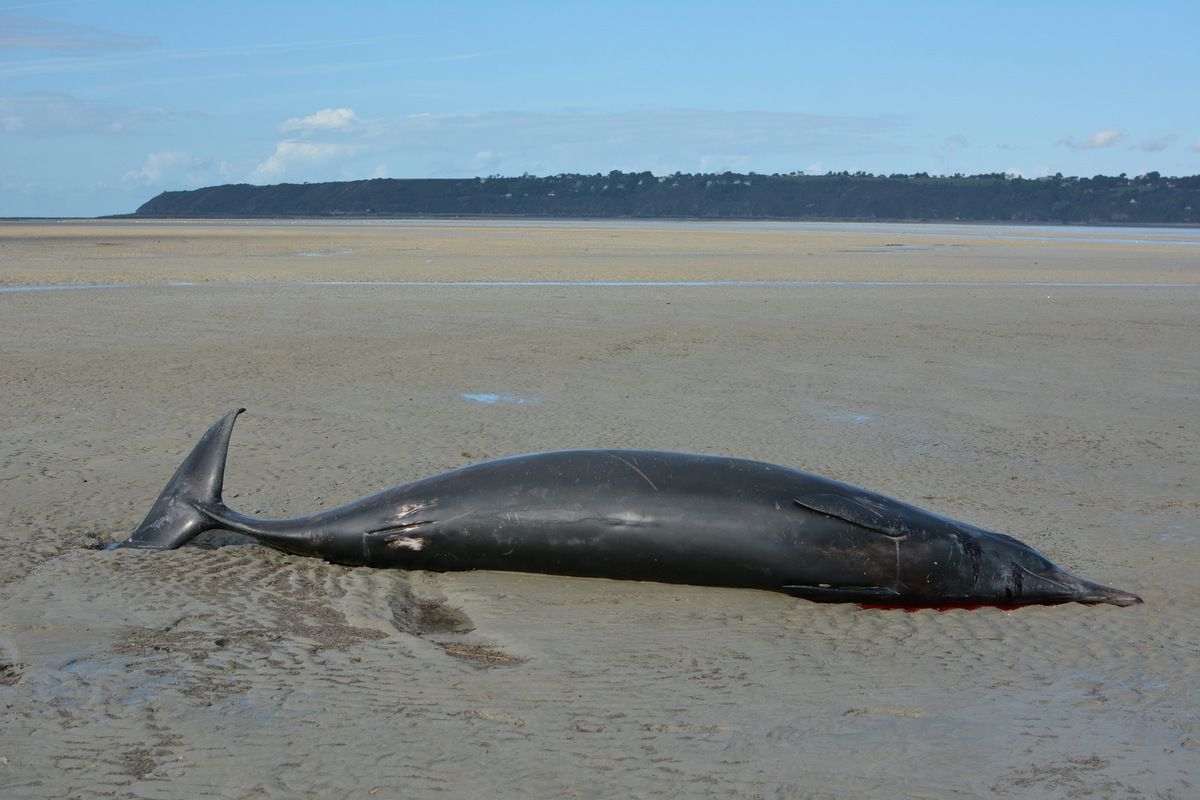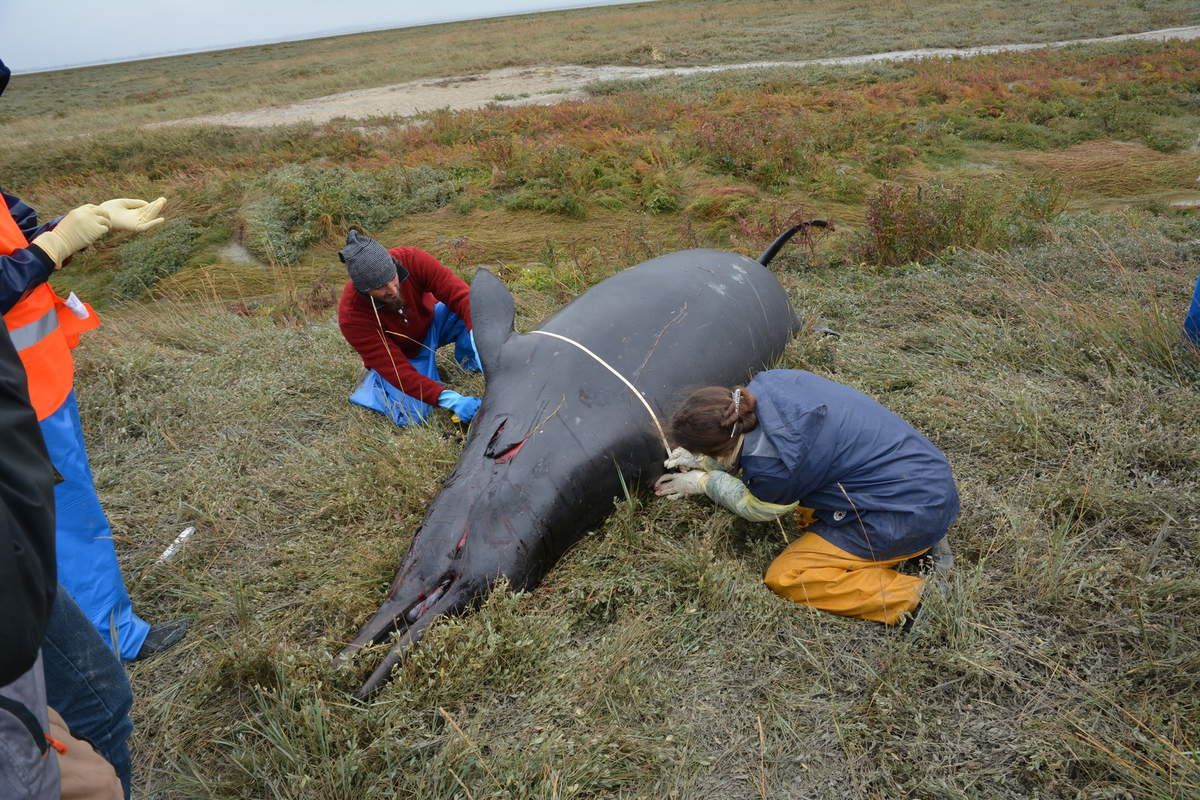Stranding of Sowerby's beaked whale (Mesoplodon bidens) in Mont Saint Michel Bay, France.
This Tuesday, October 18, 2016, we intervened in the bay of Mont Saint Michel (Dragey and Gênets) France, with other local correspondents of the French National Stranding Network for a really unusual stranding.
In fact it was a family member of Ziphiidae, also called beaked whales. Group of cetaceans provided with teeth (unlike the real whales have baleen plates) that are what we call "great divers."
This was specifically a Sowerby's beaked whale (Mesoplodon bidens). This species is normally absent from the English Channel, as found in the deeper areas where it feeds on squid and other cephalopods, and small fish. The Ziphiidae are among the cetaceans that can dive the deepest and the longest with 30 minutes of apnea between 200 and 1500 meters for the Sowerby's beaked whale, but more than 2 hours and nearly 3,000 meters for the Cuvier's beaked whale (Ziphius cavirostris) !!!
English Channel with 53 meters average depth and up to 172 meters is not an usual and suitable habitat for this species. Since 1969, only 13 stranding of Sowerby's beaked whale have been recorded in France, none in Western English Channel. The last stranding of this species in the English Channel date 7 August 2013 in Saint Marie du Mont (50), bay of Seine.
In the case of this stranding, it was a 5 meters adult female, that stranded alive Sunday, October 16 and died after an hour. The animal has been overtaken by the tide, he was in the grassy part of the bay when we intervened on Tuesday. Necropsy failed to determine the cause of death of this animal which, by its presence in the Bay of Mont Saint Michel (zone with a very shallow depth, in cul de sac), was, in any case, totally disoriented.Because of its life area far from the coast and its elusive behavior toward the boats, this is relatively rare and difficult to approach for studying this specie. This stranding is an opportunity for us to learn a little more.
A big thank you to all the participants of the stranding national network, local stakeholders, individuals who have spotted the animal and who warned the competent authorities and the entire Pelagis team for their advices.
And a special thanks to the DREAL Normandie that recently fitted us with outfits and materials ideally suited we were able to use during the procedure.
Text: Morgane PERRI, Association AL LARK





